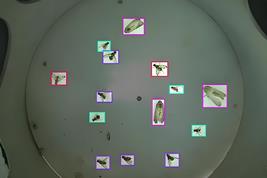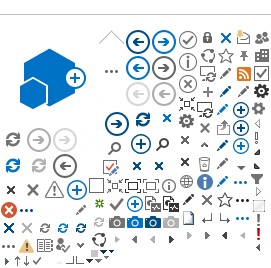29. September 2025

Fruit flies (Bactrocera spp.) in fruit cultivation and fall armyworms (Spodoptera frugiperda) in maize fields cause considerable crop damage every year. An international research team, including scientists from the Leibniz Centre for Agricultural Landscape Research (ZALF), has now developed a system that can automatically detect these insect pests in real time using smart traps. The results were published in the journal Scientific Reports. Smart traps are a new technology equipped with cameras, sensors, a solar power supply and artificial intelligence. The traps combine pheromones as lures with real-time image recognition: once an insect is caught, a photo is taken and transmitted to a server for analysis. A specially trained AI model ('Yolo-pest') identifies the species of insect with 94 percent accuracy.
The technology was tested in mango orchards and maize fields in Punjab Province, Pakistan, under real conditions. The systems remained reliable even under conditions of dust, heat, and unstable internet connectivity. In addition to taking pictures, the traps also record weather data, such as temperature and humidity, which are both important factors in insect behavior.
The collected data is automatically sent to a central database. Through a connected smartphone app, farmers receive information about where and when pest pressure occurs. This saves time and reduces the effort required for manual trap checks while enabling early and targeted responses.
The smart trap hardware was primarily developed and manufactured in Pakistan, while the AI model for insect identification was developed in close collaboration between the University of Bonn and ZALF. "The smart trap acts like a digital monitoring system in the field. During practical tests in Pakistan, it identified fruit flies in mango cultivation and fall armyworms in maize. A manual inspection by farmers was not necessary," says
Dr. Amit Kumar Srivastava from ZALF, co-author of the study.
Less pesticides – more efficient plant protection
One major advantage of the smart traps is their ability to reduce pesticide use. By identifying pest hotspots early, the need for insecticides is significantly reduced. This protects beneficial insects, reduces pesticide residue on food, and helps preserve soil and water.
The new device is robust, as it is able to recognize species visually even under difficult environmental conditions. This is especially advantageous in regions with high temperatures, dust, intense sunlight, and poor internet connectivity, which are common in many tropical and subtropical regions. This makes the system particularly attractive for farms in countries with limited infrastructure that have had little access to digital pest monitoring thus far.
What comes next?
In the future, the researchers plan to expand the system to include other flying insect species and test it on other crops. However, the current trap design cannot be used for ground-dwelling insects. Additionally, the technology is limited to insect pests attracted by the available pheromones. Despite these limitations smart traps could become an integral part of modern, sustainable plant protection strategies – especially in times of climate change, increasingly unpredictable pest outbreaks and growing demands on food safety.
Project partner:
- MNS-University of Agriculture, Multan, Pakistan
- Leibniz Centre for Agricultural Landscape Research (ZALF), Germany
- University of Bonn, Germany
- University of Florida, USA
- University of Göttingen, Germany
- University of Georgia, USA
- Cholistan University of Veterinary and Animal Sciences, Bahawalpur, Pakistan
Funding:
The publication was made available Open Access as part of the project DEAL.
Further Information:
https://www.nature.com/articles/s41598-025-97825-3#Fun
Text disclaimer:
This is a summary of the original text created with the help of artificial intelligence: Hakim, Ayesha; Srivastava, Amit Kumar; Hamza, Ali; Owais, Muhammad; Habib-ur-Rahman, Muhammad; Qadri, Salman; Qayyum, Mirza Abdul; Ahmad Khan, Fawad Zafar; Mahmood, Muhammad Tariq; Gaiser, Thomas (2025): Yolo-pest: an optimized YoloV8x for detection of small insect pests using smart traps, in: Scientific Reports, 15:14029. Published Open Access under the license CC BY 4.0.
The text has been carefully reviewed and revised in the light of AI regulations at ZALF.
